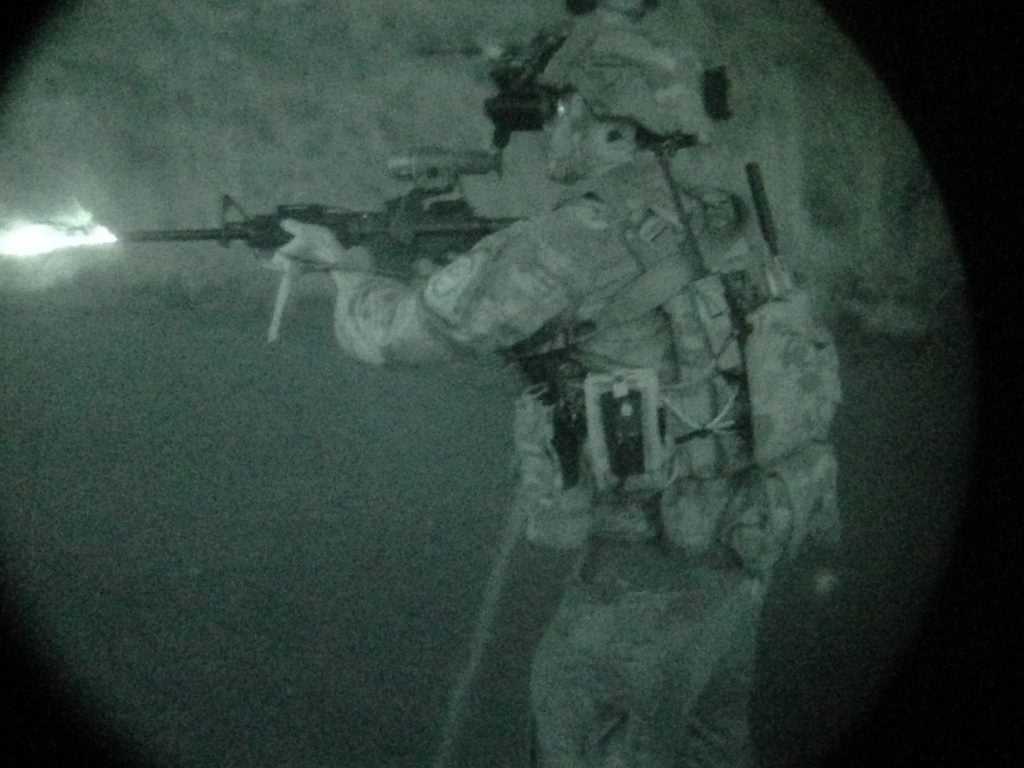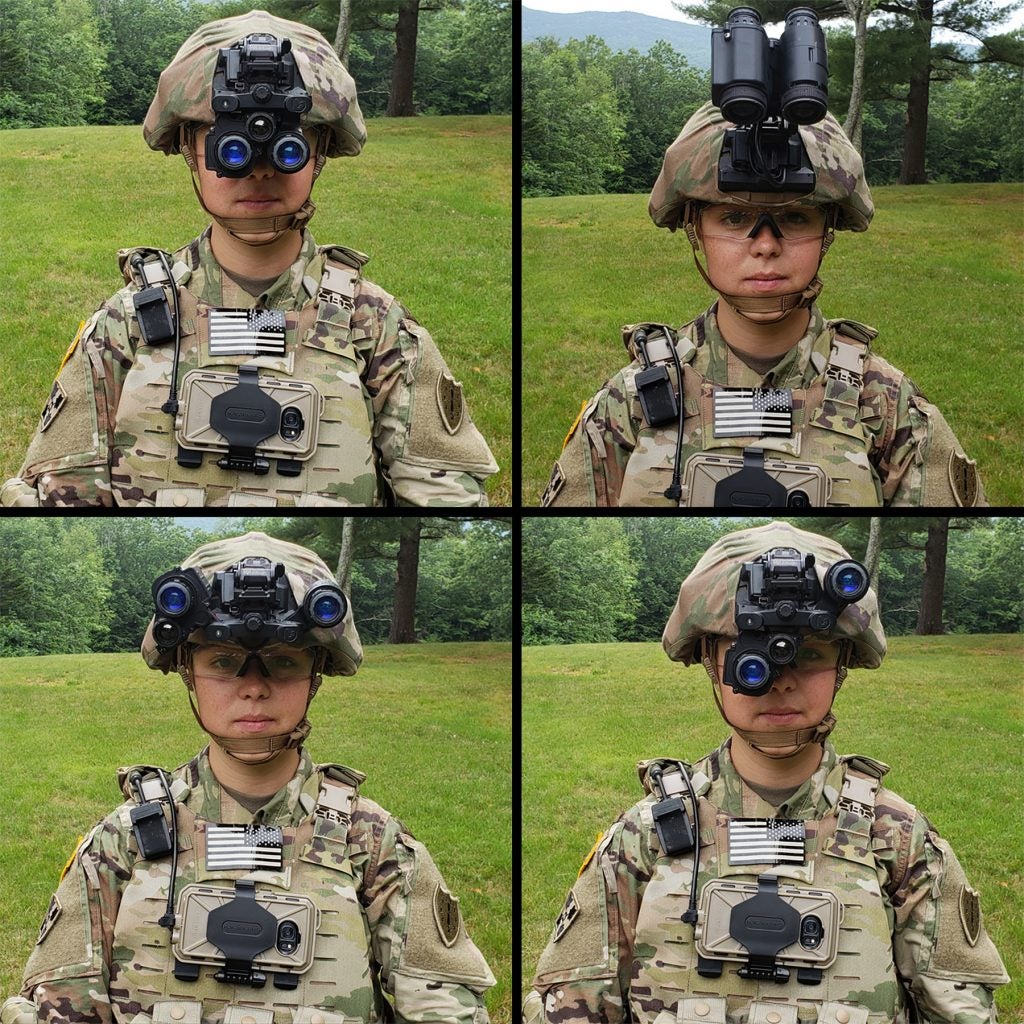Enhanced Night Vision Goggle-Binoculars Being Tested by US Army
US Army soldiers from the 2nd Armored Brigade Combat Team, 1st Cavalry Division are acting as the ‘test-bed’ for the latest generation of Enhanced Night Vision Goggle-Binocular (ENVG-B) being developed by Program Executive Office Soldier (PEO Soldier) with support from the Soldier Lethality Cross Functional Team and the Army Futures Command.
The ENVG-B offers both higher resolution and increased depth perception whilst incorporating a fused thermal imager to allow soldiers to ‘see-through’ smoke or dust or whilst operating in low or zero illumination environments such as underground. The use of white phosphorous tubes also means that users will no longer see through the traditional green tint of earlier generation models.
The goggles are also Augmented Reality (AR) enabled using the Nett Warrior platform. Part of this includes Rapid Target Acquisition, the use of the ENVG-B with the Family of Weapon Sight-Individual (FWS-I) which transposes the view from the soldier’s individual weapon sight via a miniature camera into the goggles, allowing for soldiers to fire around corners without exposing their head and upper body. The FWS-I forms a key element of the Integrated Visual Augmentation System (IVAS) scheduled for issue from 2021.

The user can switch between three different views using the ENVG-B; standard full-goggle view, full weapon sight view or a split-screen which allows both to be viewed, along with input from Nett Warrior, showing the location of other soldiers, mapping and navigation aids. According to reports, the ENVG-B has already been tested by Army and Marine infantry and Rangers who have provided glowing reports.
The new goggles do not, however, increase the field of view over older models (amounting to around a 40 degree field of vision) but are lighter and offer increased capabilities over goggles such as the GPNVG-18 employed by numerous SOF ground and rotary units which offer an impressive 97 degree field of vision. The ENVG-B also currently only offers seven and a half hours of battery life meaning that extra batteries will need to be added to the infantryman’s already considerable load.

